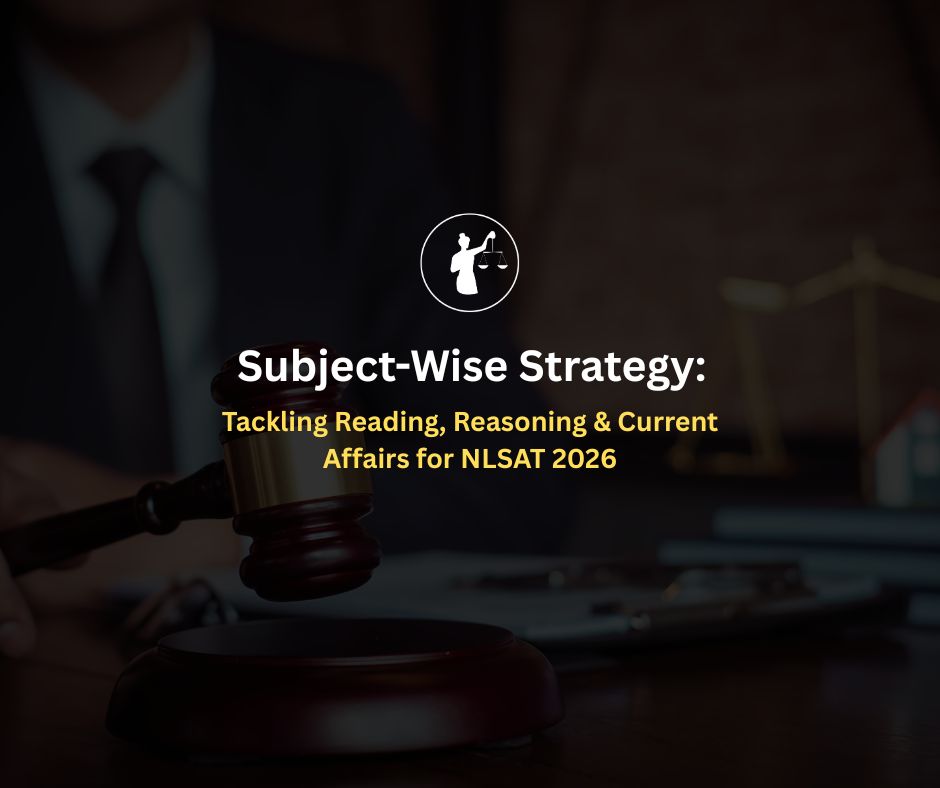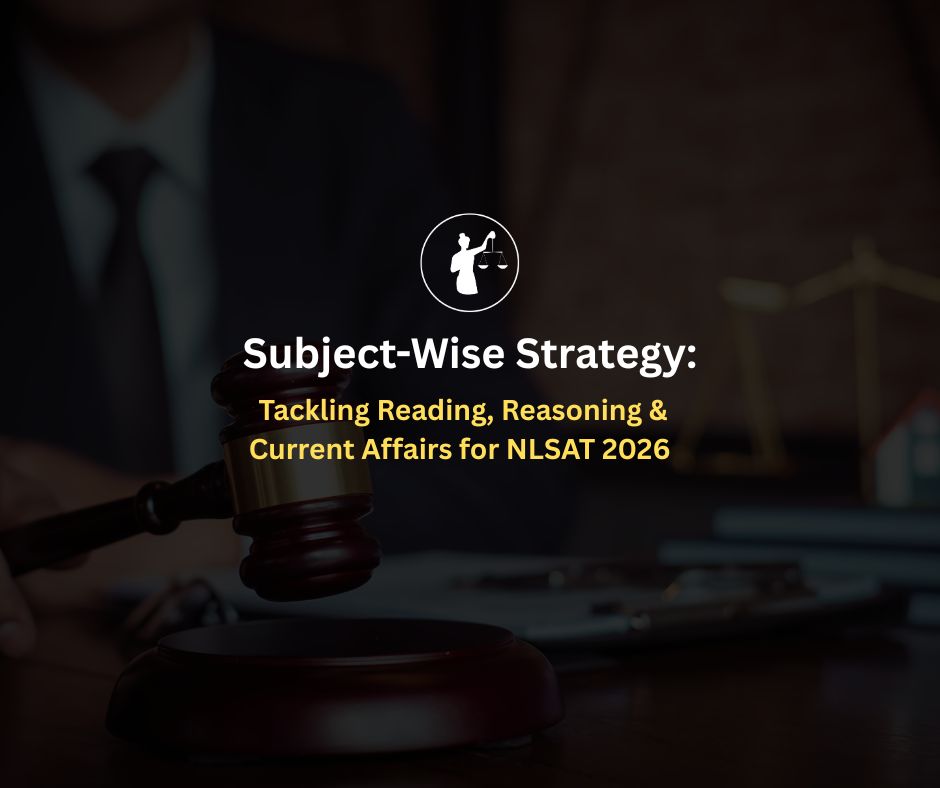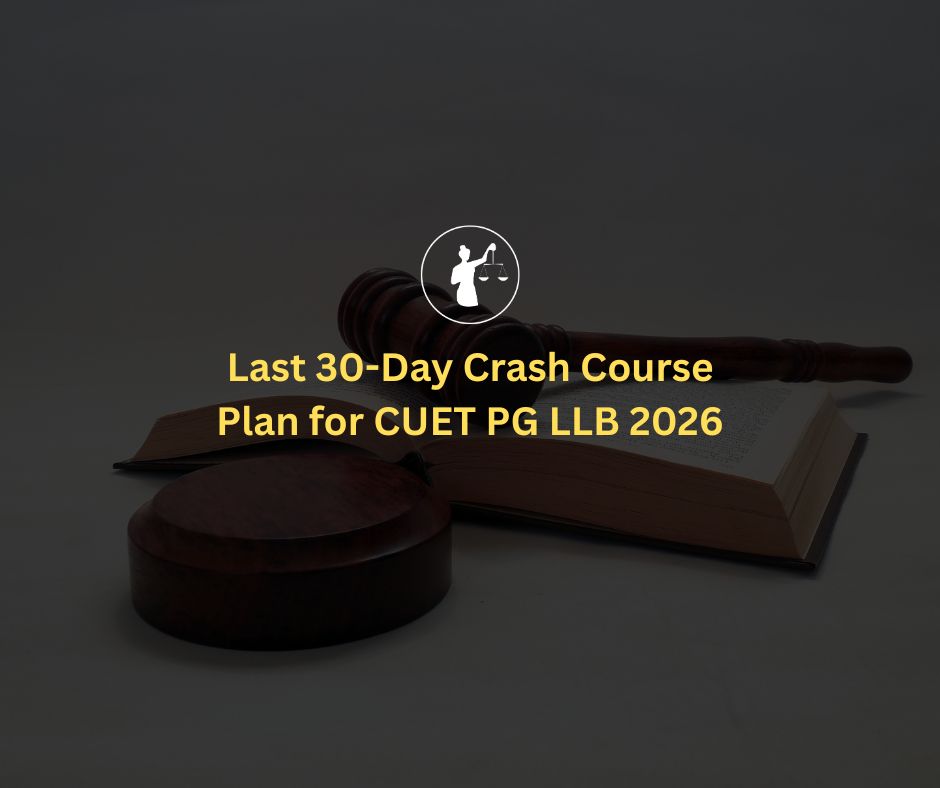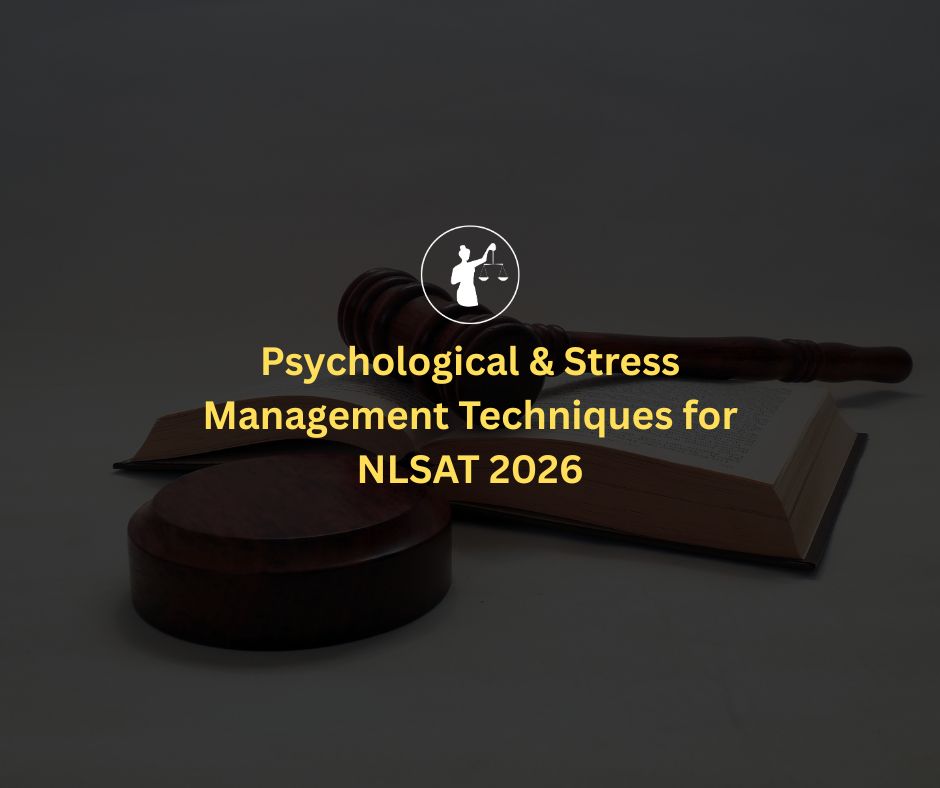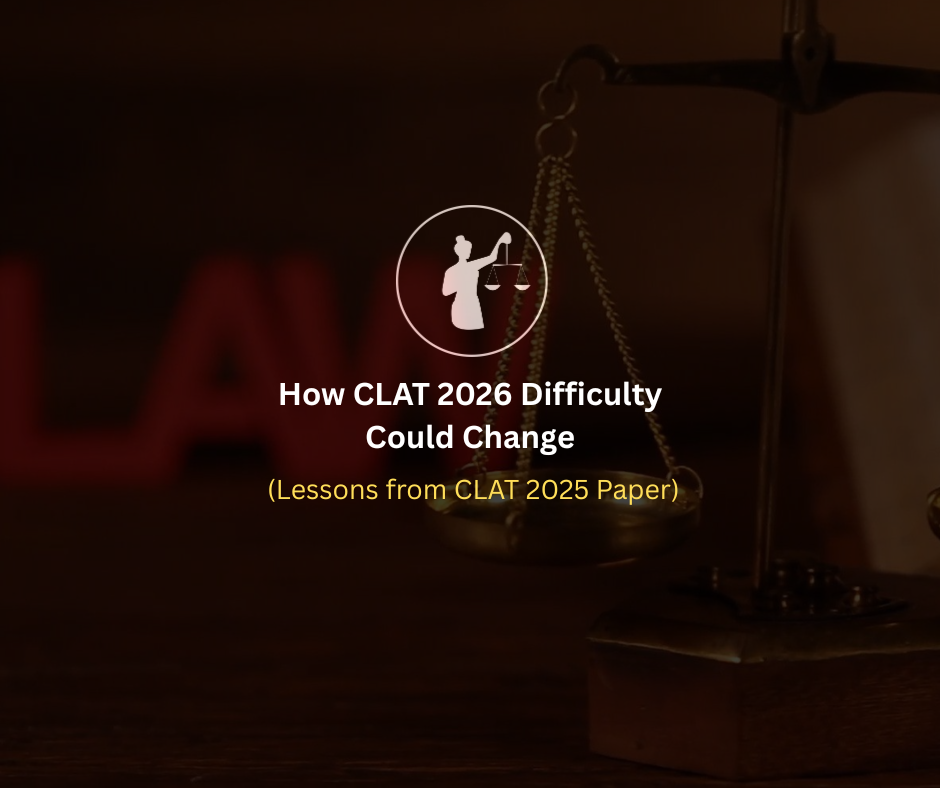
The CLAT 2025 paper surprised many aspirants and coaching institutes with its subtle shifts. It was neither radically different nor a simple repeat of past years. Instead, it created difficulty not through format changes, but through strategic design choices that punished small mistakes and rewarded sharp inference.
As CLAT 2026 approaches, aspirants need to study those shifts closely. This blog unpacks what changed in CLAT 2025, why it mattered, and how it could influence the difficulty of CLAT 2026.
Best CLAT Online Coaching 2026 – 2027 by NLTI
What Actually Changed in CLAT 2025
Format Stability: The Consortium retained the two-hour, 120-question format, keeping sectional weightage largely consistent.
Readability of Passages: Passages in English, Legal, and Logical Reasoning were more accessible in language compared to older editions.
Subtle Legal Reasoning: Legal questions moved away from rote recall. They required precise application of principles to nuanced fact situations.
Overall Perception: Many aspirants found the paper easy-to-moderate. But this did not mean scoring was simple, rather, cutoffs rose because students attempted more with higher accuracy.
When the paper feels easier, marks get bunched together. This creates grade compression:
A one-question error can drop ranks by hundreds.
Guesswork becomes riskier, because the penalty is amplified in a compressed scoreband.
Final ranks are determined not by how much you know, but by how few mistakes you make.
CLAT 2025 also saw key disputes and corrections, further showing that precision, not speed, is the deciding factor.
These are points in the blog that seem plausible given the evidence, but don’t have strong backing yet, or are extrapolations:
1. “Legal Reasoning will be the differentiator” in future exams in quite the way described, while Legal Reasoning was important in 2025, it’s not proven that it's the major tie-breaker in every borderline case. There is some reporting about it being more manageable, but whether it becomes more difficult or more decisive is speculative.
2. Inference traps vs speed/tricky wording The idea that future CLATs will favour “subtle inference questions” rather than heavy vocabulary or recall is logical (from trends) but not fully documented (yet). Some analyses mention inference, but not in the precise shape predicted.
3. Quantitative Techniques worry about length/time over conceptual difficulty is drawn from student feedback, but data on how many “time-taking but easy” questions vs conceptually hard ones isn’t always consistent. Some students said Quants were “slightly difficult for some” or “lengthy” in some passages.
4. Predicted strategies / risk-management under compression are more advised than proven: i.e. we know scores likely compressed, but how exactly the distribution will change (how many people get high marks, etc.) is inference.
5. Trends into CLAT 2026 (when the blog says “expect more of X”) are forward projections rather than factual reporting.They are grounded in observed behavior, but not guaranteed.
Read More : CLAT 2026 vs AILET 2026: Which Law Entrance Exam is Better for You
Month 1–2: Foundation + Precision Training
Goal: Build clean accuracy and avoid careless errors.
Mocks: 1 full-length mock per week. Don’t chase high attempts. Instead, analyse:
How many were avoidable mistakes (misread, silly error)?
How many were knowledge gaps (GK fact, principle missing)?
Legal Reasoning:
Practice 3–4 passages every alternate day.
After solving, write one-line rules from each principle. This builds a habit of applying law quickly.
GK/Current Affairs:
Maintain a running Google Doc / notebook. Each entry = Event + Date + Why it matters legally/politically.
Revise weekly.
English + LR:
English: Solve 2 RC passages daily with focus on inference, not just facts.
LR: Practise 2–3 passages from past year sets, time yourself strictly.
Month 3–4: Speed + Sectional Strengthening
Goal: Balance speed with accuracy; reinforce Legal + GK as differentiators.
Mocks: 2 per week. Apply “Conservative Attempt Rule” → attempt only what you can defend in one clear line.
Legal Reasoning:
Solve tougher principle-fact questions (CLAT 2020–2025 level).
Focus on edge distractors (options that look right but slightly misapply the principle).
GK/Current Affairs:
Weekly: 30–40 high-yield questions (from compilations or mocks).
Prioritise: Supreme Court judgments, international events, economy + environment reports.
LR + English:
Alternate days:
LR sprint: 25 min timed set.
English RC sprint: 20 min timed set.
Build switching stamina (shifting focus between dense RC and LR quickly).
Month 5: Exam Simulation + Error Elimination
Goal: Get comfortable with real CLAT stress.
Mocks: 3 full mocks per week (simulate exact exam timing).
Post-Mock Analysis Routine (90 min each):
1. Redo every wrong question without seeing the answer key.
2. Tag mistake as Knowledge / Misread / Judgment.
3. For recurring errors, create a “Mistake Log”, revise before the next mock.
Legal Reasoning:
Now practise mixed difficulty sets.
Example drill: 5 passages (2 easy, 2 moderate, 1 tricky) in 45 minutes.
GK:
Last 12 months of events – consolidate into one master revision file.
Do at least 200 Qs of static + current GK MCQs this month.
Month 6: Final Lap – Consolidation
Goal: Peak accuracy + calm execution.
Mocks: 3–4 in the first two weeks, then taper to 2 in the last 10 days.
Revision:
Legal: Revise your one-line principle notes.
GK: Revise the consolidated file daily in small chunks.
English/LR: Light daily RC and LR passages (don’t overdo volume).
Exam Drill: One week before CLAT, attempt a mock at the exact exam time (2–4 PM) to set your body clock.
Mindset: Focus on eliminating risk. In a compressed scoreband (like CLAT 2025), 1–2 errors decide your NLU.
Read More : How to Analyze Your CLAT 2026 Mocks Like a Topper : Expert Strategy
GK in 2025 rewarded candidates who tracked specific, recent events, not encyclopedic trivia.
A weekly one-liner journal (event + date + consequence) is more effective than bulky notes.
Tie-breakers like vocabulary-in-context or small logical traps can tilt ranks when scores cluster.
Adopt a conservative attempt strategy:
Attempt only what you can justify in one clear line.
Revisit “two-line ambiguities” only if time permits.
Avoid desperate last-minute guessing, the negative trade-off is heavier in an easy paper.
Choose resources that mirror the 2025 style: simple passages with layered questions.
Avoid outdated material that leans on heavy vocab or memorized legal maxims.
Compare multiple coaching answer keys to train for ambiguity, since Consortium disputes are not rare.
Months 1–2
Weekly full mocks (accuracy focus).
Build a GK habit with structured notes.
Months 3–4
Increase sectional sprints.
Drill repeated weak spots (especially Legal).
Month 5
Take 2–3 full mocks per week.
Apply a conservative attempt rule under exam conditions.
Last Month
Reduce new input.
Focus on error elimination and calm revision.
Read More : How to Score 28+ in CLAT 2026 GK: Daily & Monthly Preparation Strategy
Treat each mock as data:
Record error type (knowledge, speed, judgment).
Track time spent per question.
Note confidence level vs. outcome.
Over time, this dataset reveals where you leak marks and whether those leaks can be realistically plugged before the exam.
Also train mental stamina: accuracy often dips in the last 20 minutes, so simulate full-length exams with realistic breaks.
1. Weekly: one full test with error logging.
2. Twice Weekly: two sectional sprints in weak areas.
3. Monthly: compare at least two coaching answer keys.
4. Administrative: set reminders for Consortium notices.
5. Health: maintain regular sleep and movement—accuracy depends on cognition.
CLAT 2025 made one fact clear: difficulty is no longer about how hard the passage looks, but how unforgiving the scoring becomes. With compressed scorebands, even a couple of mistakes could push aspirants out of the top NLU bracket. CLAT 2026 will likely sharpen this trend, rewarding precision, legal discipline, and sharp GK instincts.
At NLTI, our edge lies in how we prepare students for these realities:
Mentor-Driven Training: Our mentors are NLU graduates and subject specialists who don’t just teach content — they decode exam behaviour. In post-2025 reviews, NLTI mentors highlighted how the Consortium has shifted towards inference-heavy Legal Reasoning, something we had already been building into our mocks.
Strategic Mock Design: NLTI mocks are engineered with compressed scoring in mind. Instead of flooding students with random difficulty, we craft papers where one or two subtle errors can make a huge rank difference, replicating exactly what 2025 showed. This builds the mindset students need for the actual exam.
Personalised Guidance: Beyond mocks, NLTI mentors track error logs and growth curves. When a student repeatedly falls into the same trap, say, inference questions or GK facts, our guidance is direct and corrective, not generic.
This is the difference between studying broadly and studying with NLTI providence. We don’t just follow CLAT’s changes; we anticipate them. CLAT 2025 has already told us what CLAT 2026 will value: precision over volume. At NLTI, every resource, mentor session, and mock is designed to ensure our students prepare for that exact reality.
In compressed scorebands, survival depends on one thing: training with foresight. And foresight is what NLTI exists to provide.
1. Will CLAT 2026 be tougher than CLAT 2025?
Not necessarily in format, but difficulty may rise through subtle, inference-based questions rather than complex language.
2. Which section is most likely to decide ranks in CLAT 2026?
Legal Reasoning remains the likeliest differentiator, though GK precision could quietly shift ranks in a compressed scoreband.
3. Did CLAT 2025 really have easier English and Logical Reasoning?
Yes, both were seen as readable and manageable compared to past years, though traps existed in answer choices.
4. How did CLAT 2025 affect cutoffs?
Easier sections raised overall attempts and accuracy, which pushed cutoffs higher than expected.
5. What role does GK play in CLAT 2026 difficulty?
GK is unpredictable,while weightage is fixed, recent-current affairs accuracy can sharply swing ranks.
6. Should I focus more on speed or accuracy for CLAT 2026?
Accuracy. In compressed scoring, a single mistake can cost hundreds of ranks.
7. Are Quantitative Techniques likely to remain tough?
Not uniformly tough, feedback suggests it’s often time-consuming rather than conceptually impossible.
8. How should I handle ambiguous questions?
Stick to defensible answers you can justify; don’t gamble. Always track Consortium updates for official corrections.
9. Are mocks really reliable predictors of CLAT difficulty?
Mocks simulate pressure but rarely match exact difficulty. Their main value is in error analysis and stamina training.
10. What’s the biggest lesson from CLAT 2025 for 2026 aspirants?
That “easy” papers are deceptive, success depends less on raw knowledge and more on precision, discipline, and error-free execution.

